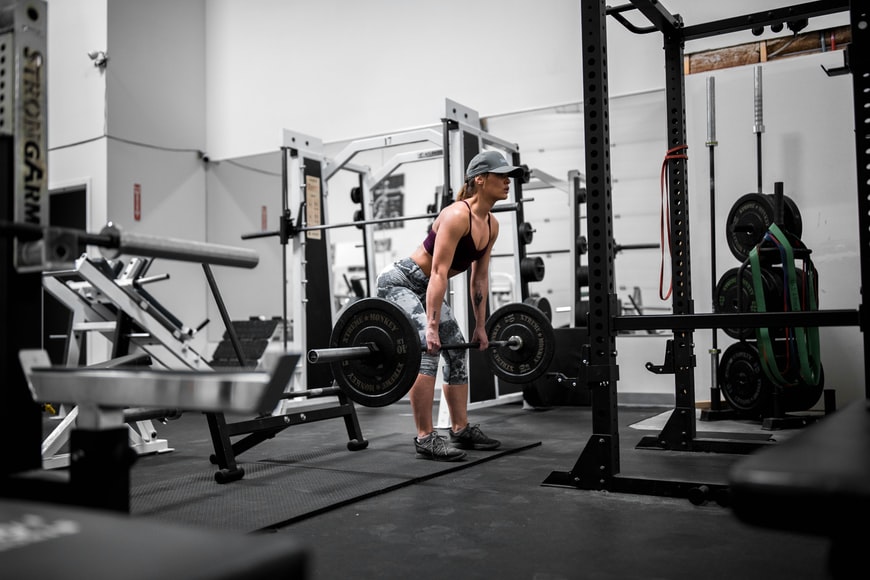- Email us if you have any questions:
- (954) 282-9080
- [email protected]
Deadlift Benefits That Are Backed by Science

Why We Love Saunas as Much as Joe Rogan
October 7, 2021
How to Safely Use a Leg Press Machine
November 4, 2021If you’re looking to take your strength and muscle mass to the next level, it’s time to start doing deadlifts. This is a full-body movement that not only tests the strength and durability of your whole body, but it offers a wide range of additional benefits (backed by science!) that we’ll outline below.
Benefits of Deadlifts
Here’s why you should be incorporating deadlifts into your training plan.
Build More Strength
Multiple studies have concluded that performing deadlifts provides a whole-body strength and power physiological response for the user. When compared to other exercises that utilize as many muscles as the deadlift does, the deadlift allows the user to lift a lot of weight. Not only will you get stronger but you’ll also make neurological strength adaptations that will carry over to other compound exercises like the bench press and barbell squats.
It’s a Full-body Workout
You may already be aware that deadlifts help work out your lower body, but did you know they also work out your upper body? Deadlift movements engage your lower and upper back muscles because those muscles are used to support your torso and you pull the weight from the floor. This movement will also work out your biceps as they support your arms during the pull and your shoulder as they work to keep your arms locked in place.
Build Stronger Legs
As we mentioned already, deadlifts place a huge emphasis on your lower body which includes your glutes, quads and hamstrings. Unsurprisingly, this will result in stronger, more powerful legs, taking your leg strength to a whole new level!
Build a Stronger Back
Building a strong lower back is extremely important, especially as you get older. It’s common to experience lower back pain with age, which is commonly due to a weak core, being overweight or sitting all day at a desk job. Incorporating deadlifts into your fitness routine will not only help alleviate back pain, but it will also help prevent back pain.
Deadlifts are a functional movement, which means they assist you in carrying out many everyday tasks such as carrying groceries, doing work on your car, or even running around with your kids. Additionally, deadlifts can help prevent injury doing these same tasks. Just be sure you keep your lower back straight throughout the movement. Rounding your lower back is a common cause of deadlift injuries and will increase your chances of injury.
Burn More Calories
Since the deadlift works a lot of muscles in your body, it means you’ll burn more calories during your workout. The more calories you burn, the more fat you’ll lose. You’ll also increase your basal metabolic rate which will help you build muscle faster and burn more calories while you’re at rest.
Better Core Strength
When you perform deadlifts, you’ll rely a lot on your core’s stability to lift the weight from the ground. This means you must brace your core in order to keep your spine rigid. This active bracing makes your core stronger for other exercises. Since your core is responsible for facilitating movement, having a strong one will benefit everything you do.
Improve Athleticism
Studies indicate there is a link between core strength (which is improved by deadlifts) and improved athletic performance. Deadlifts may also be beneficial for performing sports that involve sprinting and jumping since the deadline is performed to a perpendicular plane to the body but loaded in a horizontal plane.
Enhance Endurance
Even though deadlifts are commonly associated with strength training more than conditioning, you can actually increase your muscular and cardiovascular endurance simply by increasing the number of sets and reps you perform. Deadlifts tax many muscles, which means you’ll quickly find yourself getting in a great workout with just a few high-rep sets.
Better Posture
Deadlifts help to improve your posture because they keep your shoulders, spine, and hips in alignment. Performing deadlifts requires proper form, which means you’ll have to keep your shoulders squeezed back, spine straight, and hips mobile. When combined, these requirements result in improved overall posture.
Develop a Stronger Grip
Deadlifts require a lot of grip strength in order to properly hold onto the weight during the movement. This makes deadlifts a quick way to develop stronger grip strength due to its necessity.






